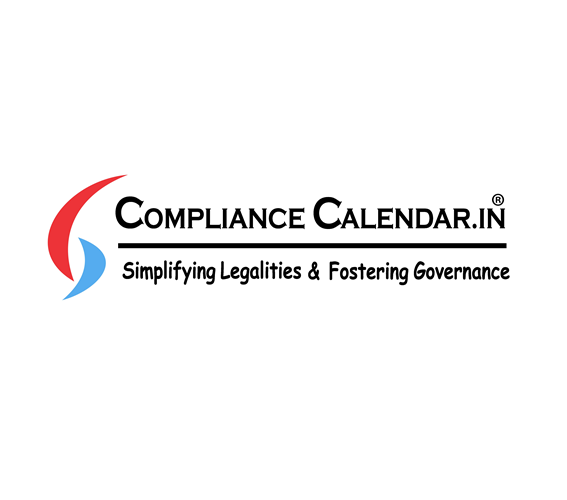
A barcode is a machine-readable symbol (usually a series of black and white lines) that stores data about a product, such as its price, name, brand, and batch number. It is scanned at billing counters or inventory systems for easy tracking and management.
In India, barcodes are governed and issued by GS1 India, an autonomous body set up by the Ministry of Commerce and Industry.
Why is Barcode Registration Important for Startups?
For startups, barcodes bring several business advantages:
Required to sell products on e-commerce platforms.
Simplifies inventory and warehouse management.
Speeds up billing and checkout processes.
Builds brand credibility in the supply chain.
Reduces human error and improves tracking.
So, whether you’re into food products, cosmetics, fashion, or electronics—barcode registration is a smart move to grow professionally and gain customer trust.
Barcode Registration Process in India
Here’s how you can register a barcode in India:
Step 1: Visit GS1 India’s Website
Go to – the official barcode issuing authority in India.
Step 2: Choose the Barcode Type
Startups can apply for GTINs (Global Trade Item Numbers), which are used in EAN/UPC barcodes. These are accepted globally and across all retail platforms.
GS1 India offers barcode packages based on the number of products/SKUs you want to register.
Step 3: Fill in the Application Form
You’ll need to provide:
Business details (name, address, PAN, GSTIN)
Nature of the product(s)
Brand name and categories
Step 4: Upload Documents
Documents needed:
PAN card of the company or individual
GST certificate
Address proof
Certificate of Incorporation (for Pvt Ltd/LLP)
Product catalogue (if available)
Step 5: Verification and Allotment
GS1 India will verify your application and documents. Upon approval, you’ll receive a GS1 Company Prefix, from which you can generate GTINs and barcodes for your products.
Legal Provisions and Regulatory Authority
Barcode registration in India is not governed by any specific section of the Companies Act or Trademark Act, but it is a regulatory requirement for product identification, driven by:
GS1 Global Standards: A global system used in over 100 countries.
Department for Promotion of Industry and Internal Trade (DPIIT): GS1 India functions under DPIIT, Ministry of Commerce and Industry.
Though barcode registration is not legally mandatory, it is essential to access modern retail channels, especially if your startup wants to scale.
Renewal and Validity
Barcode registration is generally valid for 1 year, after which you need to renew your GS1 subscription annually. Renewal fees are slightly lower and depend on your turnover and the number of GTINs required.
Frequently Asked Questions (FAQs)
- Is barcode registration mandatory for startups in India?
It is not legally mandatory, but it is practically essential if you want to sell in retail stores or on e-commerce platforms.
- Who can issue barcodes in India?
GS1 India is the only authorized body to issue official GS1 barcodes. Avoid third-party sellers offering cheap barcodes as they may not be accepted by retailers.
- How long does it take to get barcode registration?
It usually takes 3–7 working days after document submission and fee payment.
- Can I get barcode registration online?
Yes, the entire barcode registration process is online via the GS1 India portal.
Conclusion
For startups in India, barcode registration is more than just a technical requirement—it's a gateway to professionalism and scalability. It helps you access organized retail, streamline operations, and build credibility with buyers and partners.

Valuation for Funding: Ensuring Maximum Investment Potential
Securing funding is a key milestone for any business aiming to expand or launch new projects. A significant part of this process involves determining the accurate value of the company or its assets. Investors and regulatory bodies often rely on detailed valuation methods to understand a firm's worth before committing capital.
Understanding the Role of Valuation in Funding
Valuation is the process of estimating the present worth of a business, asset, or company share. It plays an important role in funding because it gives investors a clear picture of what they are getting. A well-prepared valuation report can influence investment decisions by highlighting the value and growth potential of the business.
Valuation under FEMA
The Foreign Exchange Management Act (FEMA) governs the rules and regulations related to cross-border investments in India. When companies seek FDI, they must comply with FEMA requirements.
The process of valuation under FEMA involves:
Reviewing Financial Statements: Financial documents, including balance sheets and profit and loss statements, are carefully examined. These documents help in understanding the current financial performance of the company.
Market Comparison: The value of the company is compared with similar companies operating in the same sector. This helps in determining a realistic range of values.
Asset Appraisal: The company's assets are appraised individually. This includes tangible assets like machinery and real estate, as well as intangible assets such as intellectual property.
Discounted Cash Flow (DCF) Analysis: Future cash flows are estimated and brought to their present value. This
Valuation Report for FDI
A Valuation Report for FDI is a detailed document that outlines the methods used to arrive at the valuation and presents the final worth of the company or its assets.
Frequently Asked Questions (FAQs)
- What is the importance of valuation in the funding process?
Valuation is key to understanding a company’s worth, which helps investors assess risk and return. It also plays an important role in negotiating funding terms and ensuring regulatory compliance.
- How does Valuation under FEMA affect foreign investments?
Valuation under FEMA ensures that investments made from abroad are done at fair market values. This process is designed to protect both the company and the investor by preventing undervaluation or overvaluation in cross-border transactions.
- What is included in a Valuation Report for FDI?
A Valuation Report for FDI typically includes an executive summary, methodology details, assumptions, financial analysis, risk factors, and the final valuation figure. This report provides a clear picture of the company’s value for foreign investors.
- Who prepares the Valuation Report for FDI?
Valuation reports are generally prepared by independent experts who have extensive experience in financial analysis and valuation. Their expertise ensures that the report is accurate and meets regulatory standards.
- What are some challenges associated with the valuation process?
The process can be costly and time-consuming, and it is susceptible to market fluctuations. Additionally, the complexity of assumptions and potential regulatory changes can present challenges during valuation.
- How can companies improve their valuation for funding purposes?
Maintaining accurate financial records, engaging experienced professionals, updating valuations regularly, and communicating transparently with investors are key steps in improving a company’s valuation.
Conclusion
Valuation is a vital element in the funding process, helping businesses present their true worth to potential investors. For companies looking to secure funding and attract FDI, preparing a detailed Valuation Report for FDI is essential.

Recovery of shares from IEPF with AMFI NAV in india
Recovering shares or dividends transferred to the Investor Education and Protection Fund (IEPF) in India is a detailed process governed by the IEPF Authority, under the Companies Act, 2013. The Association of Mutual Funds in India (AMFI) NAV is related to the net asset value of mutual funds and plays a significant role in assessing fund performance. Below is a detailed explanation covering the recovery of shares from IEPF and the relevance of AMFI NAV in India.
Recovery of Shares and Dividends from IEPF
The IEPF is a government fund established to hold unclaimed dividends, shares, debentures, and other financial instruments for investors. If shares or dividends are transferred to the IEPF due to inactivity or non-claim by the investor for seven consecutive years, you can recover them through the following process:
- Eligibility to Claim Shares/Dividends from IEPF
You can claim shares or dividends if:
You are the rightful shareholder or legal heir/nominee of the shares.
Shares or dividends have been transferred to IEPF due to inactivity for seven years.
- Step-by-Step Process to Recover Shares from IEPF
Step 1: Check the Status of Shares in IEPF
Visit the official IEPF Authority portal (www.iepf.gov.in).
Use the "Search Investor Services" option to check whether your shares or dividends have been transferred to IEPF.
Provide basic details like the company name, folio number, and your name to verify.
Step 2: Gather Required Documents
You need to compile and submit the following documents:
1. Claimant's Identity Proof:
PAN card (mandatory).
Aadhaar card (for individuals).
2. Bank Details:
Canceled cheque with the claimant's name.
Bank passbook or account statement.
3. Proof of Ownership:
Original share certificates (if physical shares).
Demat account statement (if dematerialized shares).
Transaction details showing dividend payouts or corporate actions.
4. Company Documentation:
Indemnity bond (duly notarized).
Affidavit.
Proof of entitlement (e.g., succession certificate or probate, in the case of a legal heir/nominee).
5. Dividend Details:
Information on unpaid dividends, including the year and amount.
Step 3: Submit the Claim Application
Form IEPF-5: Download and fill out Form IEPF-5 from the IEPF portal. This form is used to submit claims for refund or shares transferred to IEPF.
Attach the scanned copies of supporting documents as required.
Step 4: Submission to the Company
After submitting Form IEPF-5 online, take a printout and send the physical documents to the Nodal Officer of the Company (the company that originally issued the shares).
The company verifies the claim and forwards it to the IEPF Authority for approval.
Step 5: Approval by IEPF Authority
The IEPF Authority reviews the application and supporting documents.
Upon approval, shares are credited back to the claimant’s Demat account (if dematerialized) or physical share certificates are issued.
For dividends, the amount is credited directly to the registered bank account.
Key Points to Remember
- Nominee/Heir Claims:
In cases where the original shareholder is deceased, the nominee/legal heir must provide additional documents like a death certificate, succession certificate, or probate of the will.
- Claim Timelines:
The processing time may take 3-6 months depending on the completeness of the documents and the company’s verification process.
- Fees:
There are no fees for submitting claims, but notarization and documentation may incur costs.
AMFI NAV and Its Relevance in Mutual Fund Investments
If you need assistance with recovering your shares or have specific queries regarding AMFI NAV and mutual fund units, let me know!

Becoming a SEBI Registered Investment Advisor and Market Research Analyst
The financial markets in India present immense opportunities for individuals looking to establish a career as a SEBI Registered Investment Advisor (RIA) or a Market Research Analyst.
Steps to Become a SEBI Registered Investment Advisor
- Educational Qualifications and Certifications
To qualify as an RIA, candidates must hold a postgraduate degree in finance, economics, accounting, or a related field. Alternatively, a graduate degree accompanied by professional certifications such as CFA (Chartered Financial Analyst), CA (Chartered Accountant), or CFP (Certified Financial Planner) is also acceptable.
- Practical Experience
SEBI requires individuals to have a minimum of two to three years of relevant experience in fields like financial advisory, investment planning, or portfolio management. This ensures that RIAs have practical insights into handling diverse client portfolios and market conditions.
- Application and Registration
Once the qualifications and certifications are in place, candidates must apply for registration with SEBI. The application involves submitting Form A under the SEBI (Investment Advisers) Regulations, 2013, along with necessary documents like educational certificates, proof of experience, and KYC (Know Your Customer) details.
- Compliance and Ethical Practices
As fiduciaries, RIAs must prioritize their clients’ interests and maintain transparency. SEBI mandates RIAs to follow strict guidelines, such as fee-based compensation models and clear disclosure of any conflicts of interest.
Steps to Become a Market Research Analyst
- Educational and Technical Qualifications
To become a SEBI-certified Market Research Analyst, candidates must possess a graduate or postgraduate degree in fields like finance, statistics, mathematics, or economics. An MBA in finance or a CFA designation adds significant value.
- Analytical and Technical Skills
Market Research Analysts need a strong foundation in financial modeling, data analysis, and technical tools. Skills in statistical software and data visualization tools enhance the ability to provide actionable insights.
- SEBI Registration Process
The SEBI (Research Analysts) Regulations, 2014, govern the registration process. Prospective analysts must submit Form A along with necessary documentation, including proof of qualifications, certifications, and experience. Once approved, SEBI grants a license to operate as a Research Analyst.
- Compliance and Transparency
SEBI emphasizes transparency and ethical practices among Market Research Analysts. Analysts must ensure the accuracy of their reports and disclose any potential conflicts of interest. They should also comply with AMFI guidelines when dealing with mutual funds to maintain credibility.
NAV, or Net Asset Value, is a critical metric in mutual fund investments. RIAs use NAV to evaluate the current value of a mutual fund unit, helping clients decide on fund purchases or redemptions. Similarly, Market Research Analysts track NAV trends to assess fund performance and provide insights for investment strategies.
Conclusion
Becoming a SEBI Registered Investment Advisor or a Market Research Analyst is a rewarding career path that requires a strong educational foundation, relevant certifications, and a commitment to ethical practices. By leveraging their knowledge of AMFI guidelines and NAV evaluation, these professionals can offer invaluable guidance to investors, helping them the complexities of financial markets with confidence and precision.

LLP Closure, Company Dissolution, and NBFC License in India"
The business siteape in India is as much about managing growth as it is about making timely exits. Whether it’s the closure of a Limited Liability Partnership (LLP), the dissolution of a company, or the surrender of an NBFC (Non-Banking Financial Company) license, these processes require meticulous compliance with regulatory frameworks. Each of these activities signifies a critical stage in a business lifecycle and demands strategic planning, accurate documentation, and adherence to legal procedures.
The closure of an LLP is often necessitated by factors such as declining operations, unviable business models, or a mutual decision by partners to discontinue. In India, the Limited Liability Partnership Act, 2008 governs the procedure for winding up an LLP. The process can be initiated voluntarily by the partners or compulsorily by the authorities due to non-compliance or insolvency. Voluntary closure involves settling outstanding debts, liquidating assets, and obtaining the consent of partners to file an application with the Registrar of Companies (RoC). Once the application is reviewed and approved, the LLP is struck off the register, bringing its legal existence to an end.
The complexities of LLP closure, company dissolution, and NBFC license surrender highlight the importance of professional guidance. These processes involves dealing with multiple regulatory bodies, including the Ministry of Corporate Affairs, the Registrar of Companies, and the Reserve Bank of India. Non-compliance or errors in documentation can lead to penalties, delays, or even legal complications. Engaging legal advisors, chartered accountants, or corporate consultants can streamline these procedures, ensuring a smooth transition and compliance with all statutory obligations.
The legal frameworks governing these processes have evolved to facilitate ease of doing business while maintaining the integrity of India’s corporate environment. For example, the introduction of the Insolvency and Bankruptcy Code (IBC) in 2016 has streamlined the resolution of financial distress for companies, allowing faster and more transparent exits. Similarly, amendments to the LLP Act have simplified compliance requirements, making it easier for small businesses to wind up operations. For NBFCs, the RBI’s focus on regulatory compliance ensures that license surrender is conducted with utmost responsibility to protect the interests of stakeholders.
While the closure of a business or the surrender of a license marks the end of one chapter, it also paves the way for new opportunities. Entrepreneurs often view these transitions as a stepping stone to reimagine their ventures, pivot into new markets, or pursue innovative ideas. It’s essential to approach these processes not as failures but as strategic decisions that align with the larger vision of growth and sustainability.
In conclusion, the closure of an LLP, company dissolution, or the surrender of an NBFC license is a significant milestone that requires careful planning and execution. These processes, governed by robust legal and regulatory frameworks, ensure that businesses can exit responsibly and transparently. Whether driven by market realities, financial considerations, or strategic shifts, such decisions reflect the evolving nature of India’s entrepreneurial and financial ecosystems. With the right guidance and compliance, these transitions can be managed efficiently, allowing businesses and stakeholders to focus on future endeavors with renewed clarity.